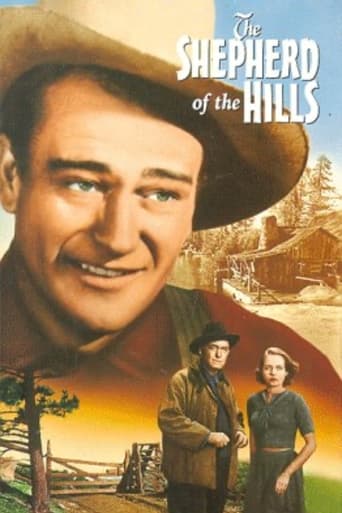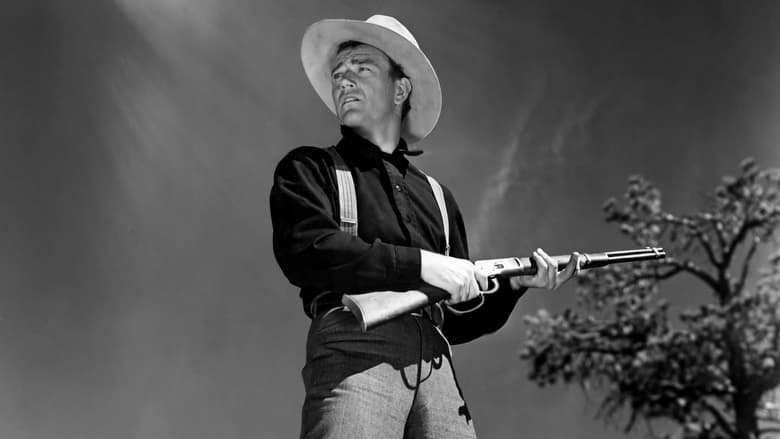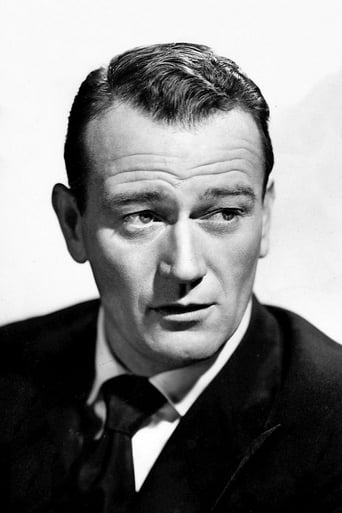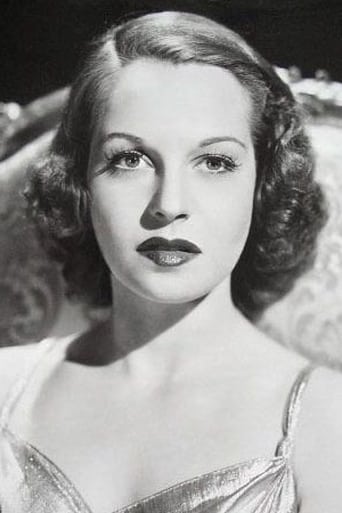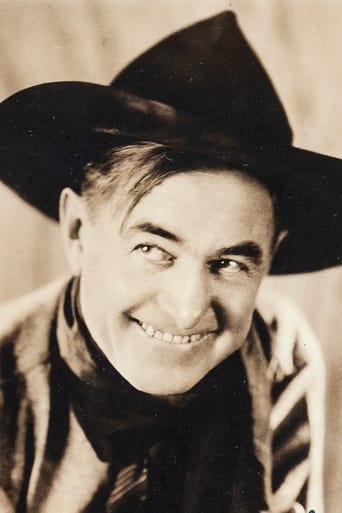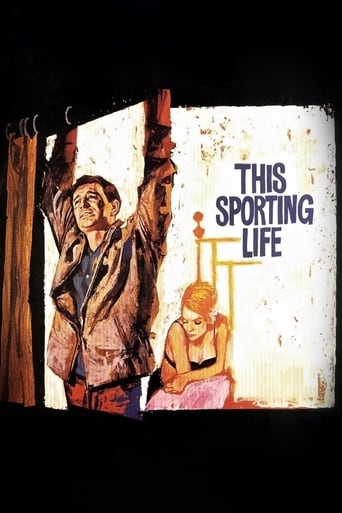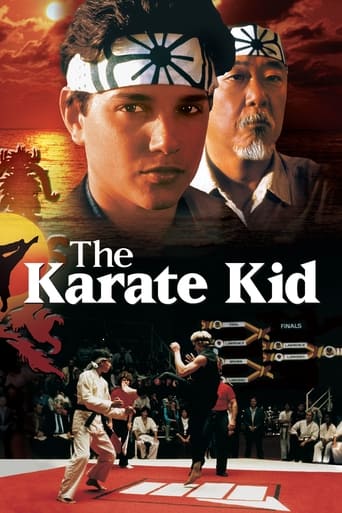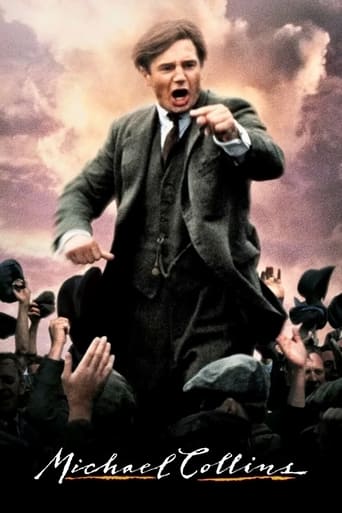The Shepherd of the Hills (1941)
Young Matt Matthews, an Ozark Mountains moonshiner, hates the father he has never seen, who apparently deserted Matt's mother and left her to die. His obsession contributes to the hatred rampant in the mountains. However, the arrival of a stranger, Daniel Howitt, begins to positively affect the mountain people, who learn to shed their hatred under his gentle influence.
Watch Trailer
Cast
Similar titles

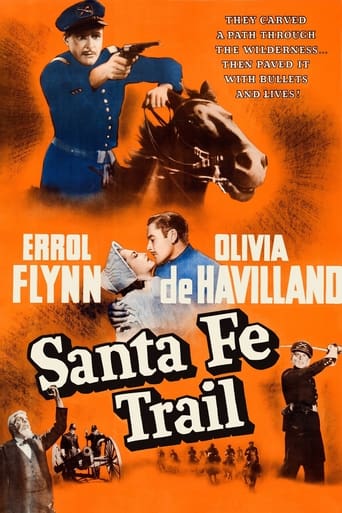

Reviews
Good story, Not enough for a whole film
Tells a fascinating and unsettling true story, and does so well, without pretending to have all the answers.
There's no way I can possibly love it entirely but I just think its ridiculously bad, but enjoyable at the same time.
One of the worst ways to make a cult movie is to set out to make a cult movie.
This is an overlooked John Wayne movie ,as well as an overlooked Hathaway's -who in his long career produced more great or good movies than wretched ones :"Peter Ibbetson" is one of the most beautiful romantic movies I know,"lives of a Bengal lancer is adventures movie quintessence and "Niagara" remains one of Marilyn Monroe's best films ,to name but three.John Wayne is cast against type in "the shepherd" ;he is not really the he-man but a frail human being ,born under a bad sign , with a curse hanging over him .The characters and the atmosphere are not unlike those of "the trail of the lonesome pine" which Hathaway made five years earlier ,with the same wonderful color.Some scenes are admirable:when Wayne 's old man enters the room of the old home,he feels a presence in the room : the furniture, the things ,everything reminds him of the woman he's never stopped loving (he is as romantic as Peter Ibbetson!).Another memorable scene shows the old man and his son fishing in the river :watch closely and you'll hear a ravaged tale ;the gentler side of the movie hides real fury (and Hathaway does not indulge himself a flashback of the stormy fateful night).Actually,John Wayne 's character is not so much bitter as wistful and it's one of the actors' best performances;but it's all the cast that should be praised .Add it to your Hathaway list.
I first saw "The Shepherd of the Hills" outdoor drama when we visited Branson for the first time, in the late 1970's. My family and I were totally unfamiliar with this southwest Missouri area, and this was only a few years prior to the Branson area's "explosion" onto the entertainment scene. It expanded from 6 or 8 theaters, then, with perhaps 5,000 seats, to several times this number today, with more seats than all of Broadway. It's possible there now for someone to attend something like 50 or 60 shows for a month - one every evening and a number of breakfast or matinée performances - and never see the same one twice, with additional ones available if one wishes to begin a second month.From earlier days, and continuing today, two of the cornerstone attractions in the Branson area are Silver Dollar City theme park (modeled after an 1880's silver mining complex, but with 21st-century New York City or Hollywood pricing) and The Shepherd of the Hills farm, the original cabin, the large outdoor amphitheater which presents a lavish production of the story, a restaurant, gift shop, etc. They also have all the information about characters upon whom the book is based, and Harold Bell Wright, that one could possibly want to know (and then some!).This film's "version" of the book and story is well-played, the scenery well-photographed (especially since footage was done 65 years ago), and the characters interesting. However, the story here represents the book about as well as if John Wayne's film, "Red River," had been presented with this title and its characters renamed to coincide with this story.First, the elder Mathews were not a female moonshiner and her wimpy husband. They were leading citizens, operated the mill, and were an asset to their rural community and their fellow residents.Young Matt and Sammy, as a "couple", were more like characters from "The Waltons" than those portrayed. The "Shepherd" was also a model citizen-type, no gunfighter or ex-con, and was no relation to Young Matt whatever.Actually, the Shepherd was the father of the young man who had fathered the mentally-challenged young Pete, the son of the Mathews' late daughter. His son had loved her, had returned East not realizing he had left her pregnant, and was prevented by his father (the Shepherd) from returning, and subsequently disappeared.The Shepherd had come to the area to view the situation and attempt amends. During the actual book (and the drama as still presented in Branson today) the unknown "specter" character appears throughout, is shot, and dies, but before passing, is discovered to be the Shepherd's lost son, and there is a heartfelt resolution of matters towards the end.The Shepherd also achieves rapprochement with Old Matt, who had threatened mayhem should he ever encounter the man he blamed for his daughter's broken heart and death.Wash Gibbs is a nefarious character, with designs upon Sammy, and a rival of Matt - in both versions - but in the book he is still a "Baldnobber" and gangster. The "Baldknobbers" were vigilantes who had done worthy things for the citizenry in the post-Civil War period, with carpetbaggers and others attempting to plunder the areas - but like a lot of such groups, when there was no further need for their good works, they turned their prodigious physical strengths to illegal, self-serving ends.Several interesting, key characters from the novel are missing from this film; e.g., Jim Lane (Sammy's father) is more of a key element than shown here. And the Marjorie Main character, with the over-the-top scene where she regains her sight, represents no key element of Wright's story. The name "Moanin' Meadow," and its representation in the movie have no part in Wright's book. While in both presentations, the characters were simple "hill folk," neither sophisticated nor educated - the film provides many with a far greater "bumpkin" image.Again, this is an excellent film, but I would have enjoyed even more seeing the same characters presented as actually portrayed by Wright.
This is a great movie that was filmed during the summer of 1941 while my family was camping in Big Bear, California. I was only 3 years old and have been told about the visit to the sets that my older sisters were able to make. They don't recall seeing any stars and think that they visited after the days shooting was completed. They were camped in a public campground just down the hill from the houses that were built for the movie. I have been told that I sang the Frank Sinatra hit "I'll Never Smile Again" at the age of 3 for all of the campers at the nightly campfire gathering. I memorized songs, I've been told, from the radio that my sisters always were playing. This was the last camping done until after WW 2 since Pearl Harbor was attacked in Decemeber of that year. The opening scene of the movie is of Big Bear Lake and the later scenes around the small lake where they fished is at a small man-made lake that was formed for the movie. I assume that the inside scenes were filmed in Hollywood but all of the outdoor scenes were filmed on the crest of the mountains to the south of Big Bear Lake. The San Bernardino valley is beyond some of the distant mountains as they filmed on the top of the crest. The rocks are prominent in the San Bernardino mountains and used throughout the film. The south shore of Big Bear Lake has large boulders at the water's edge but this area is not use in the movie. Anyway, it is great because of the newness of John Wayne and his now famous facial antics, which we love, and Harry Carey who was John Wayne's idol in real life. Betty Fields, always great, shines in the part of Sammy. This movie is now available as an econimical set of John Wayne DVD's that just became available. It is the best of the movies in the set but all of the others are wonderful just because they feature John Wayne. My wife and I enjoyed "Seven Sinners" which we had never seen.
THE SHEPHERD OF THE HILLS was made into a silent film in 1919. Harold Bell Wright, the author of the story, was a popular novelist of the day, and a number of his stories were turned into films. He usually concentrated on stories regarding people who lived in mountainous regions (one hesitates to call them hillbillies as they are usually shown to be non-stereotypes). As was mentioned in another of the comments here, Wright also wrote the story that was the basis for the Henry Fonda / Fred MacMurray film THE TRAIL OF THE LONESOME PINE.John Wayne is not the central figure of this film, although considered the star nowadays. In reality this film should be considered one of the best in the career of Harry Carey Sr. A leading movie cowboy actor in the silent period and early sound years, Carey had slowly moved into character parts after 1933. Possibly his best recalled non-western role is the Vice President of the United States in MR. SMITH GOES TO WASHINGTON. As a Western star, he proved to be Wayne's own model of the perfect western film actor. In fact, in the shooting of John Ford's THE SEARCHERS, Wayne purposely honored Carey by copying a mannerism he had (holding his arm with his hand in a particular position) in Wayne's last visible moment in that film.In the movie Wayne is a member of a family centered around James Barton and Beulah Bondi (Wayne's blood aunt), and his cousin Marc Lawrence. Bondi has never forgiven Wayne's father for abandoning the family, and indirectly causing the death of her sister. She has instilled in Wayne a hatred of the father. At the same time, the death of the sister is tied to the other tragedy of the family - that Lawrence is a mute. He has been unable to speak since he survived the fire that killed his aunt (Wayne' mother). The only one who occasionally stands up against Bondi's vicious hatred is Barton, but he admits in his best scene in the film that he really lacks the nerve to openly condemn her behavior.This is a great film for character actors. Besides Barton, Bondi, and Lawrence, please take note of Marjorie Main in one of her most prescient performances. She is blind, and she requires expensive surgery to have a chance for the restoration of her sight. At a critical moment Carey will lend her the money for that surgery. When her eyesight is restored everyone in the community rejoices, until Main recognizes somebody in the crowd she did not expect to ever see again. Her comment when she reveals this person's identity, and realizes the tragedy she may have unwittingly caused, is devastating in it's simplicity and ironic truth.Carey is a newly arrived rancher in the area, who (as witness his assistance to Main) gets involved trying to do good for his neighbors. And all usually benefit. Yet he too has his secrets, and they nearly rip him and several others apart.THE SHEPHERD OF THE HILLS is a movie about redemption and forgiveness, and it's cast shows the difficulties faced by common people when presented with these seemingly simple acts of behavior. All of the stars of the movie gave first rate performances in it, and for Wayne it was the first big follow-up to his overnight success in STAGECOACH. But the best performance remains Carey's, who in the end has to commit an act of violence in order to try to save his last chance for acceptance from those who count the most.
